A Guide To: Organ Pipe Cactus National Monument
This post may contain affiliate links.
Intro
Organ Pipe Cactus National Monument is located along the Arizona-Mexico border and is the only area in the United States where the organ pipe cactus grows wild.
We visited Organ Pipe in mid-February and spent a few days exploring the expansive landscape there. Coming from the relatively bleak California desert, we were immediately struck by just how much vegetation there was. In addition to the namesake organ pipe cactus, the park is filled with giant saguaros, chollas, and ocotillos. When we looked at the valley floor from afar, it appeared to be covered in a layer of vibrant green. Not exactly what we were expecting!
When to Visit
As the official park website states: “Organ Pipe Cactus National Monument is where summer spends the winter.” It’s therefore no surprise that it gets most of its visitors between the months of December and March.
Typically speaking, Organ Pipe sees occasional rain storms and mellow temperatures during the winter, which sets the scene for desert flowers to bloom in early spring. The summer can be searingly hot and surprisingly humid, with late-summer producing sudden monsoons and turbulent thunderstorms. We were only there for a brief period of time, but during our stay, the weather was absolutely gorgeous.
Where to Camp
Twin Peaks Campground ($16/night)
This is where we stayed. Twin Peaks Campground has 34 tent-only sites and 174 spots that can accommodate RV (no hookups). It looked like most of the sites had groomed gravel pads for tents and level concrete pads for RVs, which means you don’t have to worry about pitching on a slope. While there weren’t any fire rings, they did have BBQ stands and picnic tables.
In additions to nice flushing toilets, this campground also had free showers. However, they are heated with solar power, so plan on taking a shower in the afternoon, after the water has had a chance to warm up. Because in the morning, the water is ice cold (we learned this the hard way).
Reservations are not accepted, however, on the day of your arrival you can call 520-387-6849, extension 7302, to confirm the availability of a campsite.
The park rangers put on an evening program at the campground amphitheater Wednesdays – Sundays at 7pm, January through April. This would be a great way to dig deeper into the history of the park!
Alamo Campground ($10/night)
If you’re looking for a more primitive experience, you should consider Alamo Campground. It has four tent-only sites and is surrounded by tranquil desert landscape. Water is not available and fires are not permitted. It is first-come, first served only. The road to the campground is dirt and moderately maintained. But if you have 2WD and reasonable clearance, you should be fine.
What to See
Ajo Mountain Drive (21 Miles)
We did this popular scenic drive in the late afternoon, which, if you have limited time, can be a great introduction to the diverse landscape. This gravel road was a little bumpy at times but totally passable for our 2WD Ford Focus. However, if you don’t want to chance it with your vehicle, the park operates a free group van tour of the loop from January to March that departs from Twin Peak campground and the Kris Eggle Visitor Center. Ask the campground host or rangers at the visitor center.
Puerto Blanco Drive (37 miles)
We didn’t do this one, but it’s another popular scenic drive through the park. This route provides access to the Pinkley Peak Picnic Area, Red Tanks trail head, Senita Basin and Quitobaquito Springs. The road should be passable for most vehicles up to Pinkley Peak, after which high-clearance is highly recommended.
Check out the full list of Scenic Drives in Organ Pipe Cactus National Monument here
Desert View Trail (1.2 miles)
This a short trail that connects Twin Peak Campground with the Visitor Center. We did this one at dawn, just as the sun was cresting over the Ajo mountains to the east. Short and sweet, this trail allows you see many of the native species of cacti up close and in person. Best experienced as an early morning warm up or a late afternoon cool down.
Arch Canyon Trail (1.2 miles)
There’s an arch! Geez Louise! How did we miss this! Sadly we were too busy looking at cacti to see this natural stone arch, but you should definitely check it out. This trail is off of the Ajo Mountain scenic drive and steadily climbs up to the into the canyon.
Check out the full list of hikes in Organ Pipe Cactus National Monument here
Final Thoughts
We had a great time in Organ Pipe and wish we could have stayed longer. There were definitely a couple of hikes we would have liked to do (Arch Canyon obviously!) and if our vehicle had better clearance we would have loved to check out some of the more remote scenic drives. It’s one of those parks that will leave you feeling satisfied after a weekend, but if you dig a little deeper, you can easily occupy an entire week. It may not be worth making a cross-country trek to see it, but it’s definitely worth a visit if you’re in the area.


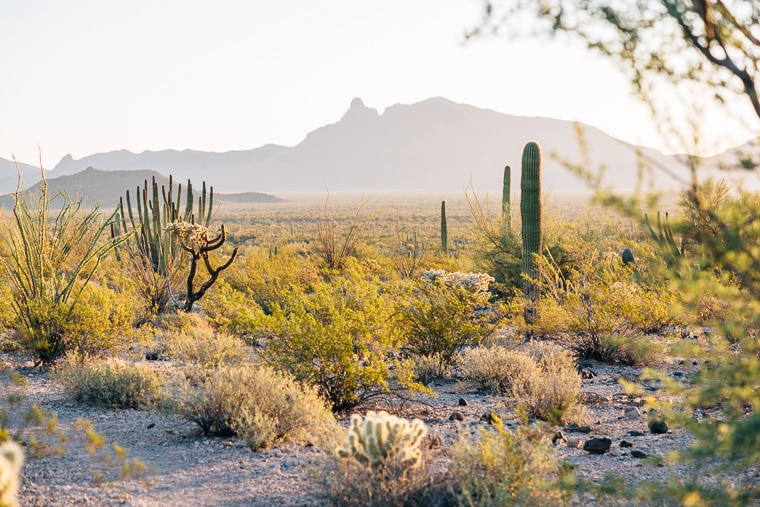
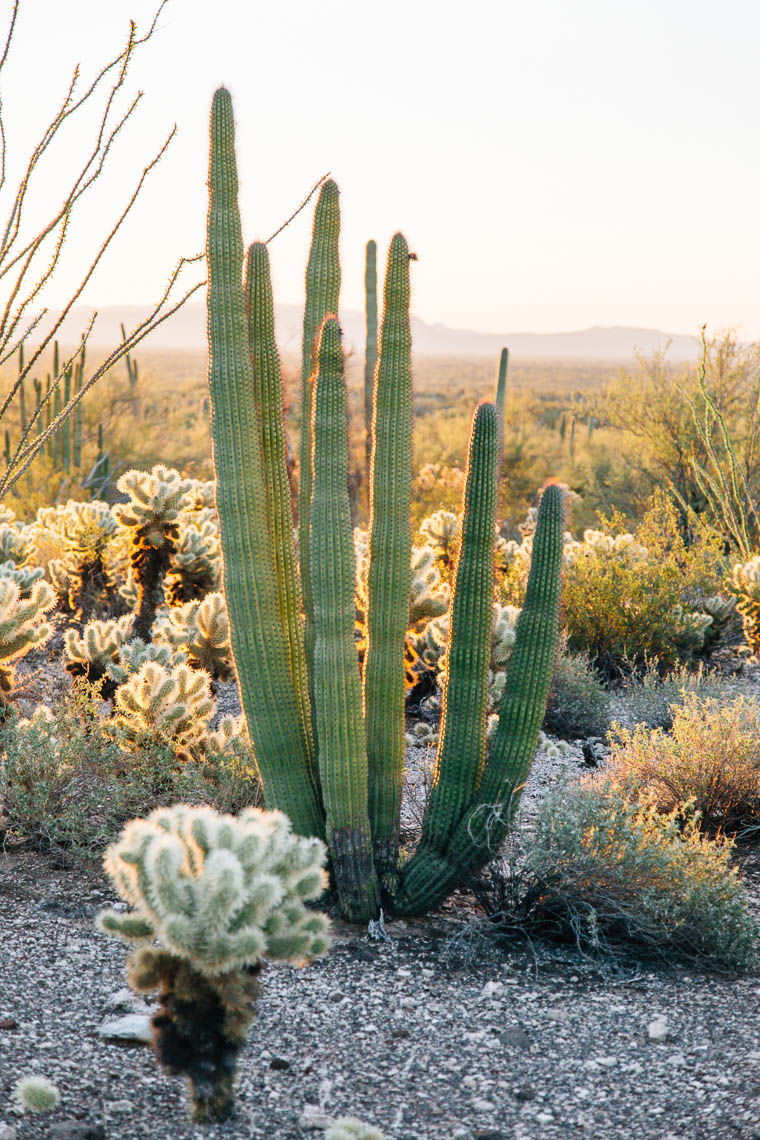
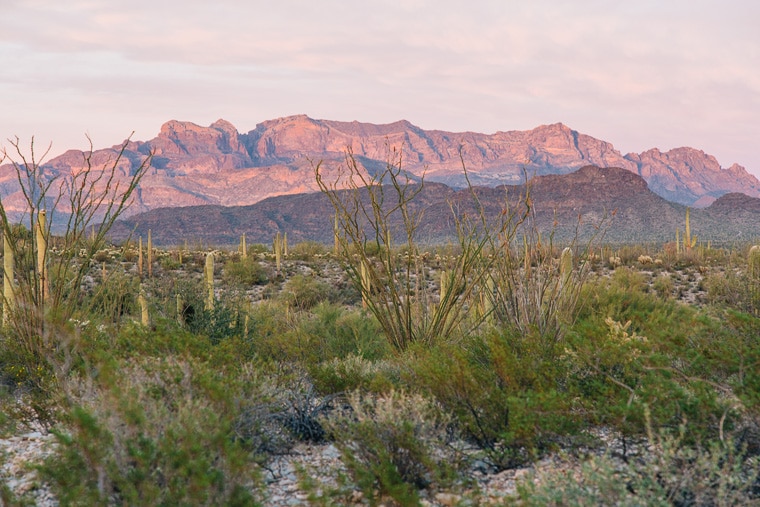
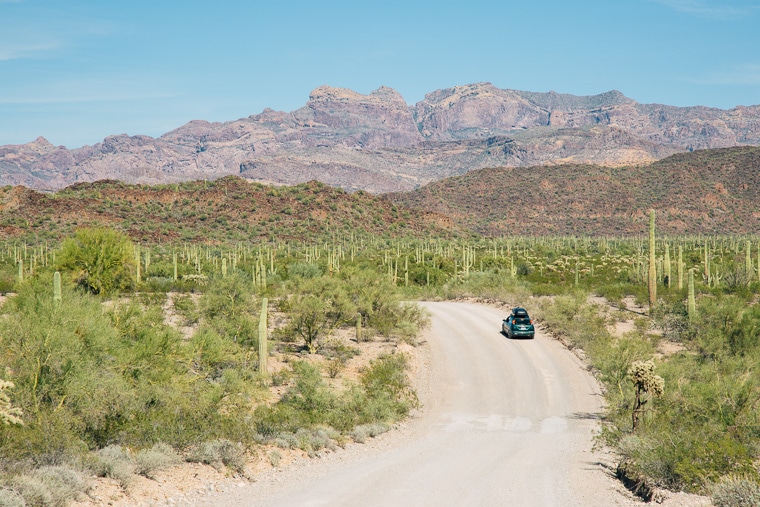
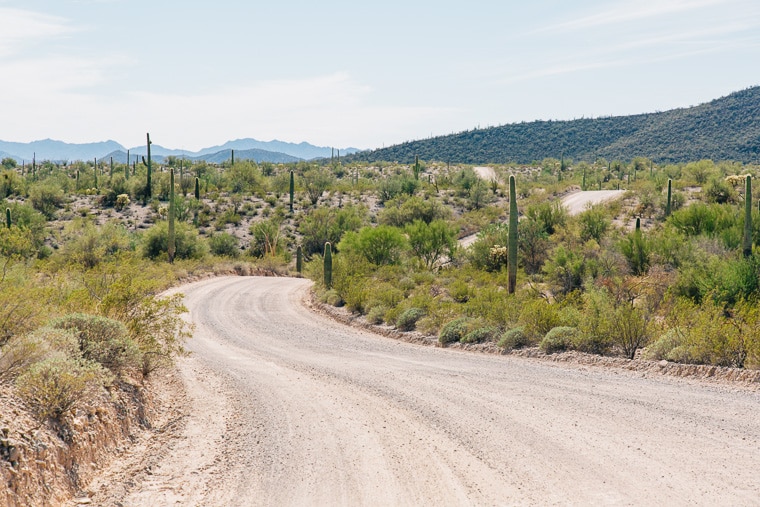
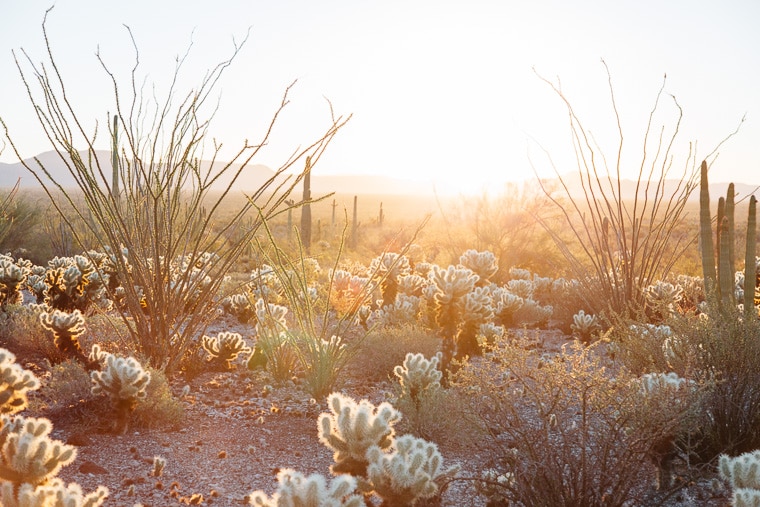
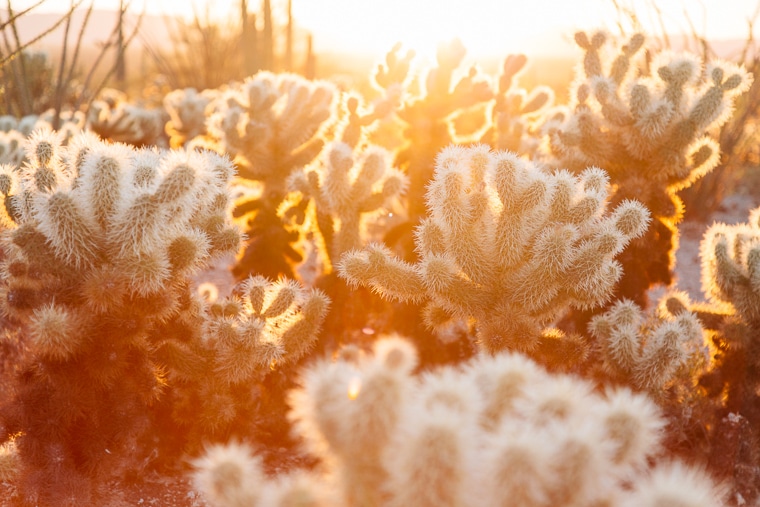
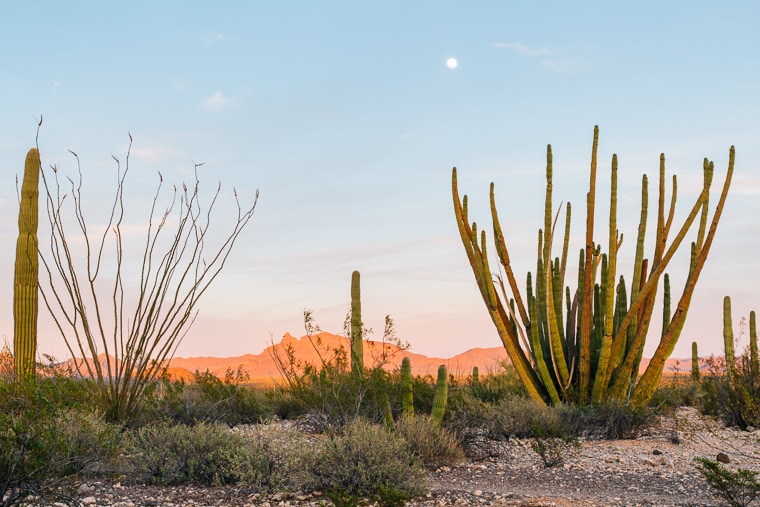
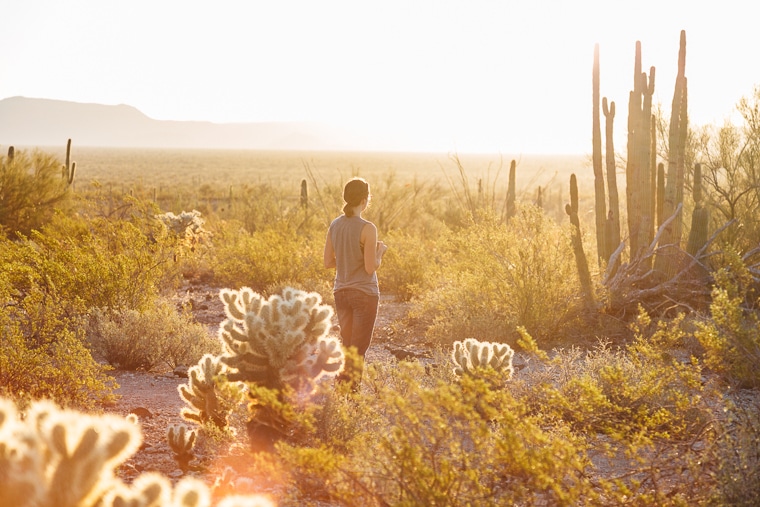
This post is awesome! I love the different sections – totally helpful! I hope to see more like this!!! 🙂
Thanks, Indy! So happy to hear you enjoyed this. We’re planning on rolling out more posts like this for parks + places we explore to help others who might be interested in visiting as well 🙂
Always bring an Afro style comb to get those “jumping cholla” cactus off your skin. Trust me it works. But a wonderful place to visit for sure.
Thanks for the tip, Bert! Megan had an unfortunate brush in with a cholla in Joshua Tree a few months back, so we definitely give them a lot of space now! But, the comb might be an addition to our first aid kit for future desert hikes.
Beautiful landscape!! That’s sweet that you got to catch it while it was so green!
We couldn’t have asked for a better time of year to hang out in the desert. Beautiful scenery and totally pleasant temperatures 🙂
I did my master’s thesis geology research at Organ Pipe in the late 80s. I had the same impression about how lush the vegetation of the Sonoran Desert was compared to California’s Mojave. I loved all the different varieties of cholla cactus and even saw a Gila monster one day — the only poisonous lizard in the US. There are very interesting old mine ruins that can be accessed via short hikes from Alamo Drive and Puerto Blanco Drive. Don’t bring dogs unless you plan to keep them on a short leash; the cholla segments on the ground will really hurt their feet. Great post. Now I want to return. Thanks.
Bleak California dezert? You sound like an amateur. You’ve never been to Anza Borrego state park. How many big horned sheep in this area?